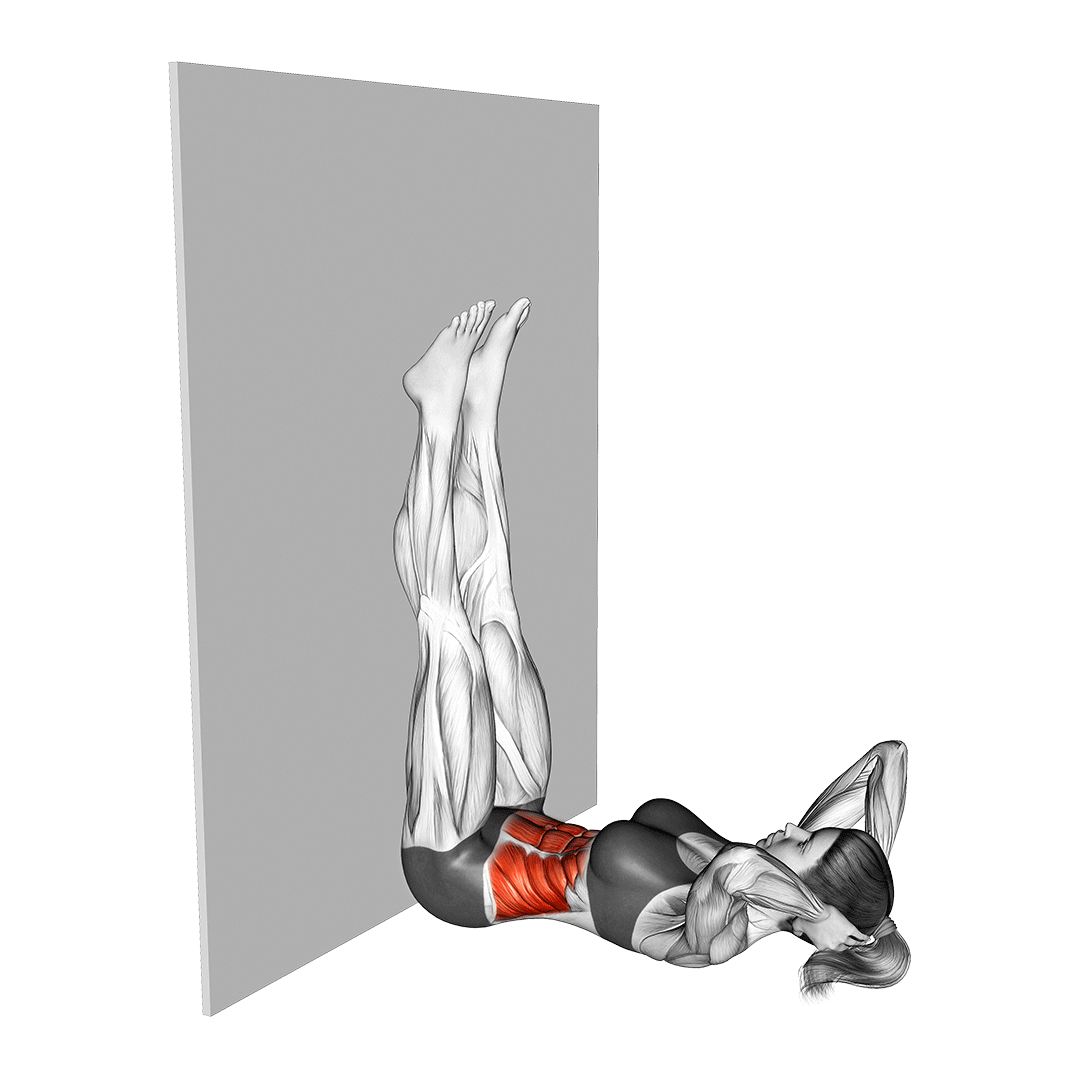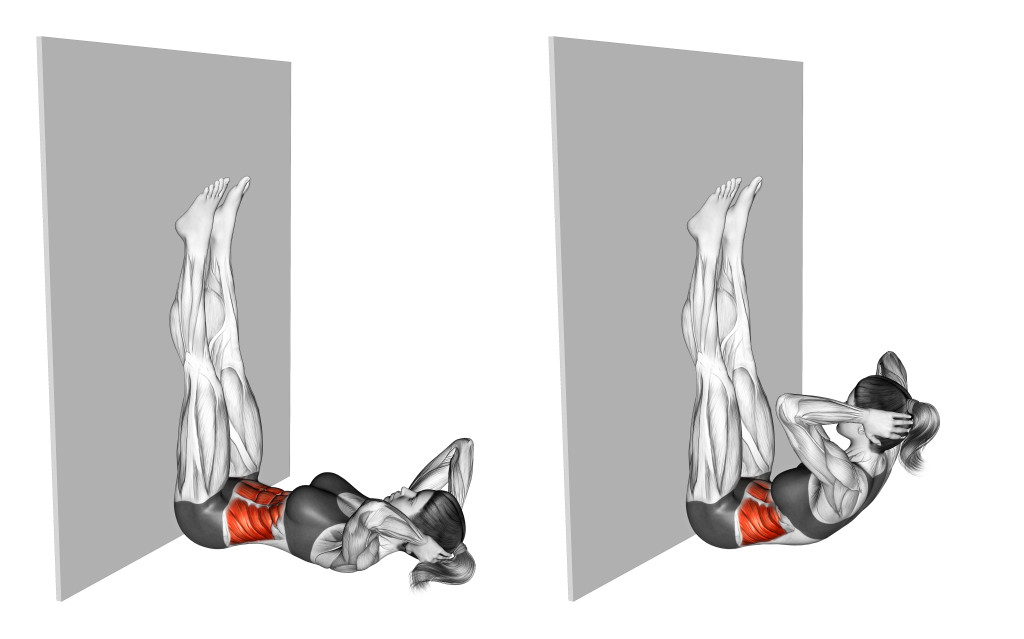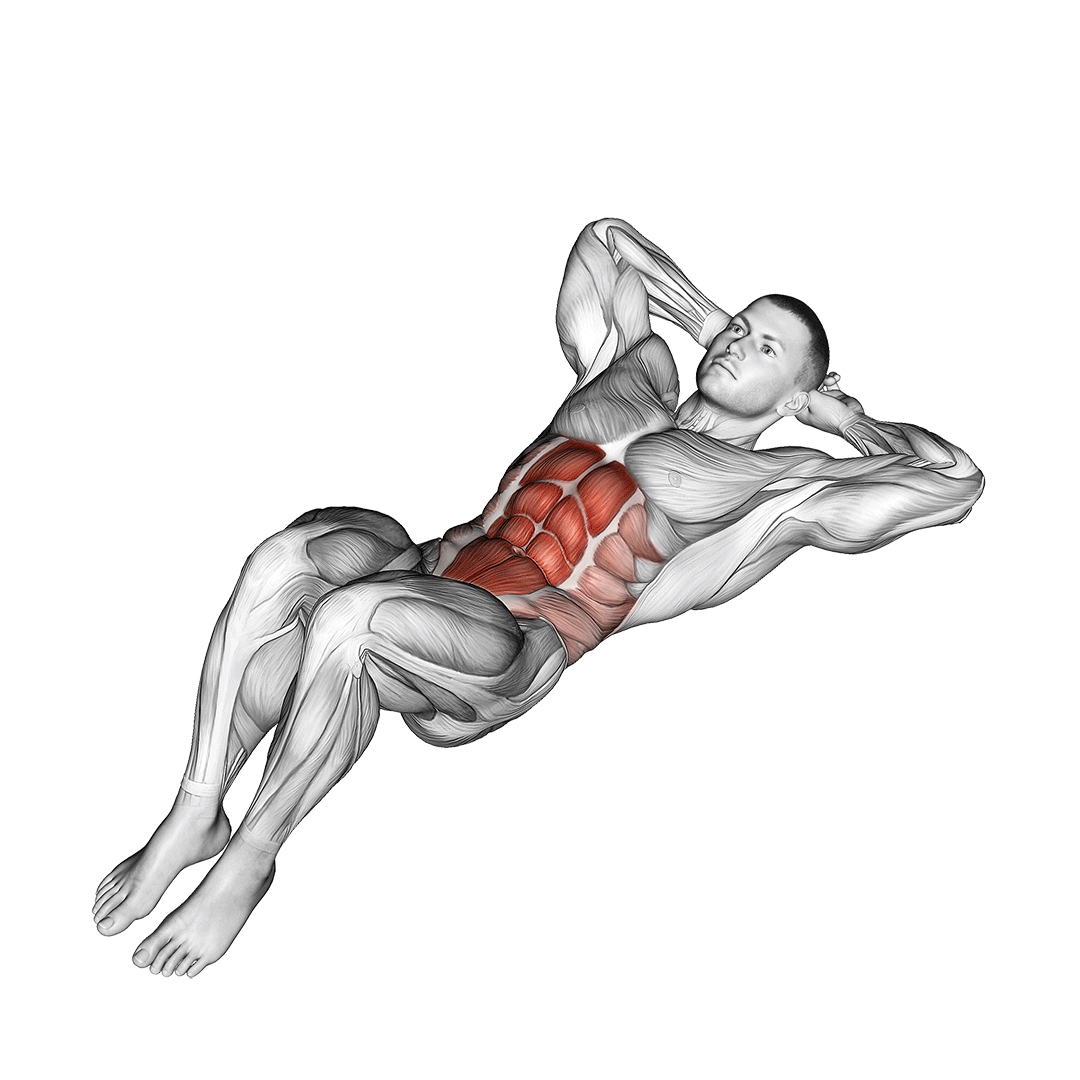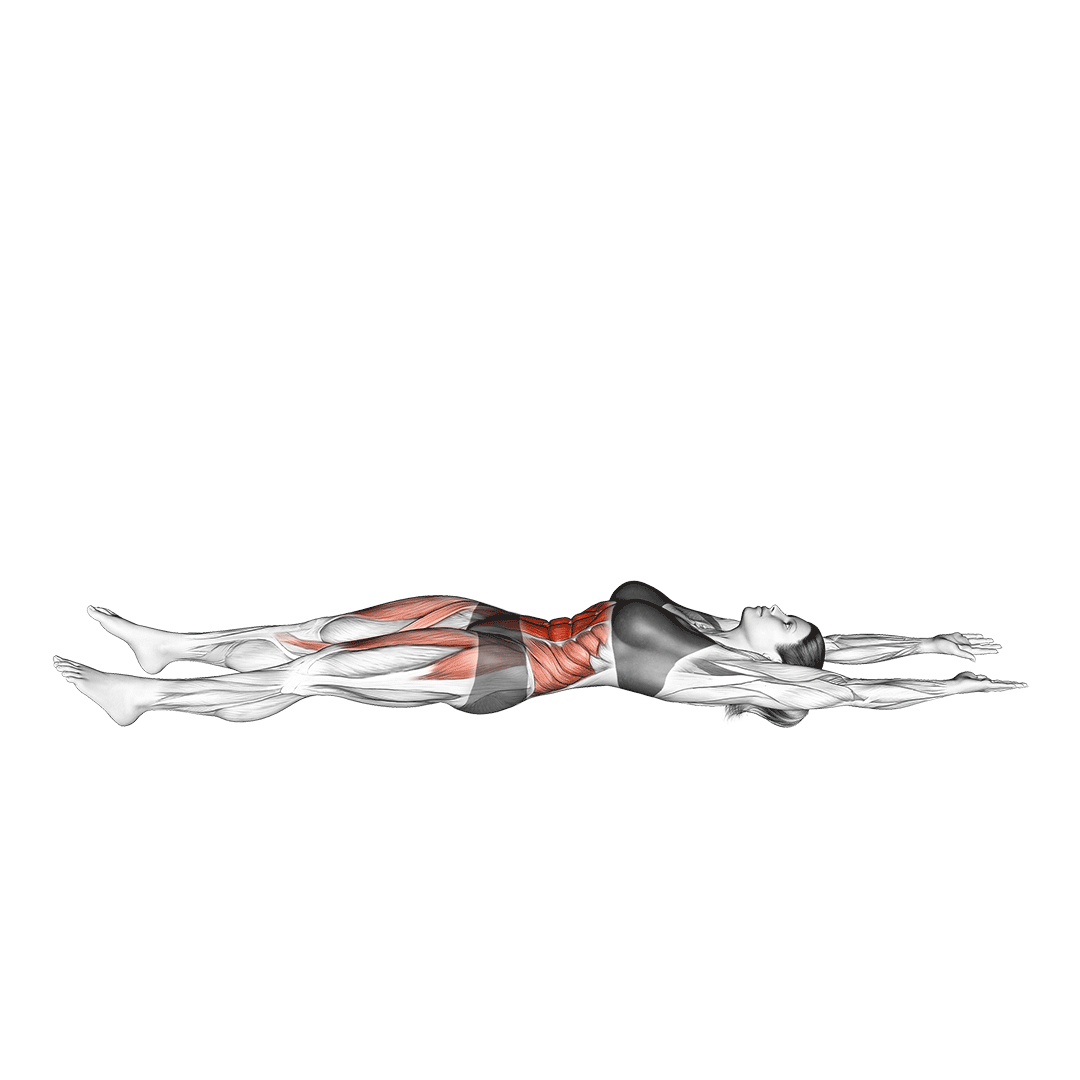What are the Benefits of Doing Wall Crunches?
Apart from being a solid bodyweight training tool, wall crunches are also occasionally used for improving the overall stability of the trunk - or as a substitute to sit-ups and conventional crunches when their disadvantages prove to be too limiting.
The benefits include:
- Great for Building Core Stability and Strength
- Reinforces Trunk Stabilization and Trunk Flexion
- Comparatively More Stable and Strict in Stance
- Requires No Equipment or Significant Conditioning
- Comparatively Less Strain on the Lower Back Than Sit-Ups
Benefits of Wall Crunches
Great for Building Core Stability and Strength
Of course, the main advantage to doing wall crunches is simply their capacity to develop both strength and stability in the core muscles.
While primarily an abdominal exercise owing to its focus on forward movement of the trunk, wall crunches will nonetheless also target the neighboring internal and external oblique muscles as well.

As such, with proper form and sufficient intensity, performing the wall crunch will develop the overall core strength of the exerciser - leading to an overall safer and stronger body.
To maximize development of the entire core muscle group, pair wall crunches with movements like back extensions or good mornings so that both sides of the trunk are adequately trained.
Reinforces Trunk Stabilization and Trunk Flexion
Because the wall crunch strengthens the main muscles responsible for forward curvature of the trunk (flexion) as well as those partially responsible for stabilization - it should stand as no surprise that wall crunches also improve these biomechanical actions as well.

Trunk flexion is utilized in a wide variety of different activities, even outside of general athleticism. Bending to pick an object off the floor, rising out of bed and hunching over a desk all require sufficiently strong and mobile trunk flexion to occur.
Likewise, stabilization of the trunk is a practically constant biomechanical action, taking place whenever the trunk is otherwise unsupported in its entirety. This can vary in contractive intensity ranging from simply sitting upright to maintaining proper spinal neutrality during a heavy deadlift set.
Seeing as how widely used these functions (and their ensuing mover muscles) are, the wall crunch can be an invaluable addition for ensuring proper core functionality, regardless of whether you’re an athlete or a weekend gym warrior.
Comparatively More Stable and Strict in Stance
Conventional crunches are somewhat limited by the position of the lower body, especially when the feet are allowed to raise off the ground near the highest point of the repetition.

This can lead to an unnecessarily stable base and otherwise increase the risk of lower back injuries if the exerciser doesn’t have their stance perfectly dialed in.
Fortunately, wall crunches do not suffer from the same issues, and can effectively be performed with less focus on keeping the lower body in place as the legs will naturally wedge against the wall.
Not only are wall crunches comparatively more stable and less likely to result in injury, but they also help prevent poor exercise technique along the lines of “cheating” the repetition and contracting muscles other than the core.
Requires No Equipment or Significant Conditioning
Unlike decline crunches, hanging leg raises or dragon flags, the wall crunch does not require an already well-established level of bodily conditioning - nor any sort of equipment other than a literal wall.
Lifters away from the gym or individuals that simply wish to train at home can take full advantage of this, allowing them to still get a decent core workout without the months of prior training or expensive equipment other abdominal exercises may need.
Comparatively Less Strain on the Lower Back Than Sit-Ups
Sit-ups have earned a spot of poor publicity owing to their supposed risk of lower back strain when performed to excess.
While the majority of publications suggest swapping sit-ups out with conventional crunches, things can be taken a step further by removing any risk of lower back flexion through the use of the wall crunch instead.

Because the legs are placed vertically along the wall, the lower back is (ideally) pressed flush against the floor, glutes aiding with distribution of the body’s weight along a wider plane.
Combined with the fact that crunches do not involve as much trunk flexion as a sit-up would, this ensures that the lower back is kept safe and relatively immobile to the greatest degree.
References
1. Schoenfeld, Brad & Kolber, Morey. (2016). Abdominal Crunches Are/Are Not a Safe and Effective Exercise. Strength and Conditioning Journal. 38. 1. 10.1519/SSC.0000000000000263.
2. Rafael F Escamilla, Eric Babb, Ryan DeWitt, Patrick Jew, Peter Kelleher, Toni Burnham, Juliann Busch, Kristen D’Anna, Ryan Mowbray, Rodney T Imamura, Electromyographic Analysis of Traditional and Nontraditional Abdominal Exercises: Implications for Rehabilitation and Training, Physical Therapy, Volume 86, Issue 5, 1 May 2006, Pages 656–671, https://doi.org/10.1093/ptj/86.5.656
